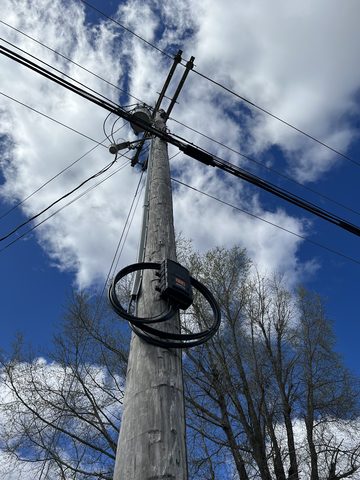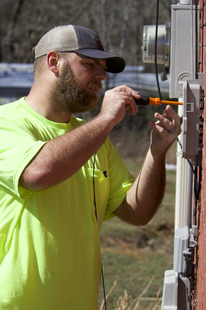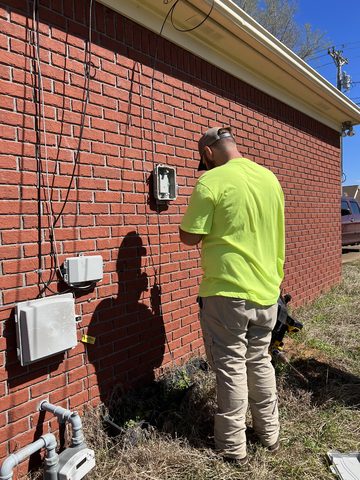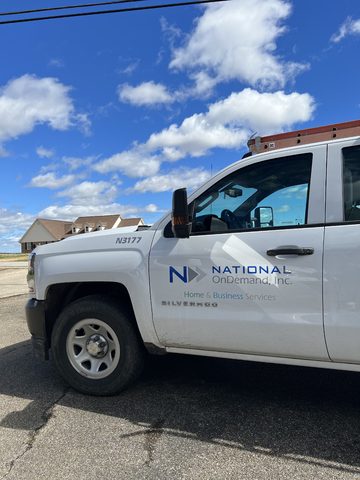Digital Divide: The Best Advice You Could Ever Get
It might be hard to believe it, but the United States has a problem throughout rural households and areas when it comes to high-speed internet connectivity and the digital divide.
How is that possible in the digital world we live in now?
Even in rural areas that have internet, it is often slow. This puts these areas at quite a disadvantage when it comes to being able to use cable and internet at home. It can limit or prohibit you from watching shows, surfing the web, etc. In urban areas, this is not an issue.
A Whitepaper from the Fiber Broadband Association titled, “The Rural Digital Divide” stated that the lack of adequate high-speed broadband availability in rural areas compared to metropolitan areas has been a persistent challenge in North America for many years. That challenge only got worse during the pandemic – especially in the rural parts of the country.

“The result is lower productivity, lagging education, declining economic development opportunities and poorer health outcomes for rural residents,” the Whitepaper read. “Fiber Broadband to the home can permanently close the rural high-speed broadband availability divide.”
Why is there such a digital divide?
It’s an issue that dates to the early 2000s. This divide reared its ugly head when the Covid pandemic struck, forcing many people to work and attend classes from their homes.
So, consider this: you have areas that have limited or no access, you have people that are handcuffed by a lack of access, or you have people that have basically given up on even exploring their options after so many years without really being connected.
It’s not accurate to assume that there are cable installation contractors near me if you are a person living in rural America.
You also have households with limited income even if high-speed internet is available to them. All these problems still exist today, long after we have emerged on the other side of the pandemic.
In late October of 2022, some 42 million Americans have no access to broadband, according to Broadband Now, a data technology company.
The FCC defines broadband as having download speeds of a minimum of 25 megabits per second (or Mbps) and upload speeds of at least 3 Mbps. Broadband technology can include everything from WiFi and satellite to coaxial and fiber-optic cables.
The current administration has sought to help via programs that are geared at closing the broadband access gap through funding that will reduce monthly bills. Those programs often have low adoption rates. Some rural and tribal communities are still waiting for the arrival of broadband in their respective areas.

According to the Federal Communications Commission website (www.FCC.gov), the Affordable Connectivity Program (ACP) is an FCC program that helps ensure that homes can afford the broadband they need for work, school, healthcare and more.
The Affordable Connectivity Program (ACP) provides a discount of up to $30 per month for broadband services for eligible consumers. Additionally, consumers living on qualifying lands can receive up to $75 per month toward broadband services.
Eligible households can also receive a one-time discount of up to $100 to purchase a laptop, desktop computer, or tablet from participating providers if they contribute more than $10 and less than $50 toward the purchase price.
The Affordable Connectivity Program is limited to one monthly service discount and one device discount per household.
People Need Broadband For Work And School
What if your job depended on having broadband internet? You would want to have it, right?
For some people that’s a huge problem!
People like Michael, a successful digital marketer, who live in rural areas without high-speed internet access, depend on local businesses like coffee houses and other public facilities with high-speed internet to fill in the gap.
It’s hard to work outside the office with no connection. The crazy part is that Mike managed this technical disadvantage for a decade. Mike would often stay at work long after work hours just to stay connected. His job depended on it. Eventually, he reached the point where he felt he needed to spend $25 monthly to be able to use his cell phone as a “hotspot” and maintain a basic Internet connection from his house.
Michael, who worked remotely for some time during the pandemic, was beyond creative when it came to finding internet to get his job done.
As technology evolved, he found himself struggling to keep up with slow internet speeds. Finally, in July of 2022, Internet Service Providers told Mike that National OnDemand would oversee the build and would run high-speed internet to his home. No longer would Mike be living in what some call “rural areas” when what they are really saying is “forgotten areas.”
“I had given up because I had heard talk of getting high-speed internet for years,” Mike said. “Once National OnDemand arrived and ran the line, my life and job became a lot easier. It made work easier and life better!”
There are countless stories about people like Mike who desperately wanted high-speed internet.
Another factor in the overall equation is the amount of money being spent to be connected.
Not only is the high-speed internet much faster, but it’s cheaper, too. Many see reduced monthly Internet bills, but they also don’t have to drive to find service, nor do they have to buy products at the establishments offering service.
Some employers have reached the point where they won’t even consider hiring a remote employee who doesn’t have access to broadband internet.
Beyond work, online healthcare, education, and conveniences like online shopping work best—and sometimes only—with broadband. During the pandemic, these tasks became necessities for many.

The need for broadband service is not limited to only office jobs. We know doctors and hospitals rely on being connected easily. However, farmers, mechanics, etc. all benefit from Internet access when it comes to doing their job. Broadband should not be considered a luxury anymore.
If there’s assistance out there to help with Digital Divide, why don’t people sign up?
Broadband has eluded low-income and rural households for one main reason: lack of money. It’s a touchy subject for both consumers and Internet Service Providers (ISPs).
For many people, it’s simply too costly. The costs can vary wildly by location or even neighborhood. On average, internet service costs about $61 per month in the U.S., according to Broadband Search, an information technology company.
Justifying what is needed to establish rural broadband infrastructure is a challenge for many ISPs. You are dealing with low-density areas with a limited number of subscribers, where heavy capital investment is needed to offer service.
While the federal government poured billions into expanding internet access to low-income and rural households, there are still road bumps to achieving connectivity for the entire U.S.
The 2021 Infrastructure Investment Bill and American Jobs Act (IIJA) earmarked $65 billion to expand broadband access. It also includes the Affordable Connectivity Program (ACP), which gives eligible households a $30 per month discount on their internet subscription (or $75 per month for households on tribal lands), as well as a one-time discount of up to $100 to purchase a laptop, desktop computer, or tablet.
While 51.6 million households are eligible for ACP assistance, only 13 million households are enrolled in the program, according to Education Superhighway, a nonprofit organization that connects classrooms with high-speed internet.
A recent survey by Education Superhighway found that the greatest hurdle for ACP enrollment is awareness: an astonishing 75 percent of people in many communities don’t know this program exists.
How is that possible? It’s time to change that.
On a national level, the adoption rate is 25%, but the rate of adoption fluctuates greatly depending on location and state. In North Dakota, just 7 percent of eligible households have signed up for ACP assistance, whereas 35 percent of Ohio residents from eligible households are enrolled.
BY THE NUMBERS:
SOURCE: Education Superhighway
States with fewest people enrolled in ACP
| State | Eligible | % Enrolled |
|---|---|---|
| N. Dakota | 114,650 | 7% |
| Idaho | 277,968 | 9% |
| S. Dakota | 129,617 | 10% |
| Alaska | 96,935 | 21% |
States with MOST people enrolled in ACP
| State | Eligible | % Enrolled |
|---|---|---|
| Ohio | 1,984,218 | 35% |
| Louisiana | 904,157 | 34% |
| Kentucky | 846,290 | 33% |
| N. Carolina | 1,741,427 | 31% |
How do I apply?
Qualifying for assistance is based on the 2023 federal poverty guideline. If your income is at or below 200 percent of the 2023 federal poverty guideline, you’re eligible for the ACP.
There are other ways to qualify like Federal Pell Grants during the award year, or if you are enrolled in programs like SNAP, Medicaid, Housing Choice Voucher (HCV) Program (Section 8 Vouchers), or project-based rental assistance (PBRA).
Applying for the ACP program is easy. One thing you will likely need: internet access to complete the application. You can go to any public library for free internet access. Apply at affordableconnectivity.gov or print an application and send it via email. Once you’ve done that, let your ISP know you wish to enroll in the program and have the discount applied to your monthly bill.

The Future of Broadband?
Narrowing the digital divide is certainly a challenge for the United States. The government is investing billions into expanding broadband service.
What are they planning to do?
The High-Speed Internet for All initiative is investing $48 billion to expand broadband infrastructure and related job training on a nationwide basis.
More than $25 billion from the American Rescue Plan will be earmarked for three funds to expand broadband access to underserved communities.
Lifeline is another federal program that provides financial assistance for monthly phone or internet service. Lifeline is available per household—NOT per person—and ONLY one service may be chosen (either phone or internet).
To be eligible for the Lifeline program, your income must be at or below 135 percent of the federal poverty guideline (in 2022 that was $18,347 for a single-person household) or you should be already enrolled in a federal assistance program, like Medicaid, Supplemental Nutrition Assistance Program (SNAP), or certain Tribal Programs. Applicants can check their eligibility and apply online at lifelinesupport.org.
The Rural Digital Divide Whitepaper from the Fiber Broadband Association offered three steps to close this gap effectively. It says the focus should be on creating the most effective rural broadband infrastructure possible, encourage private and public investment in rural fiber and to encourage public investment in rural fiber.
National OnDemand is doing its part to help run fiber and broadband all over the United States. We are actively working in 45 states building thousands of miles of infrastructure for fiber service to people that previously had limited or no options for internet access. We want people to know we are working hard to help you get connected.
Anytime. Anywhere.
